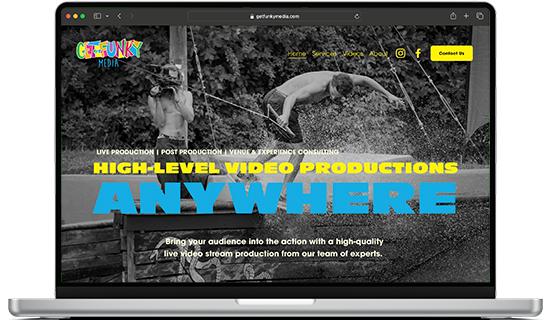Crafting the Perfect Home Page: A Blend of Design, Content, and SEO Mastery
Introduction
The home page serves as the virtual front door of your website. It's where first impressions are formed, and decisions are made. Crafting an effective home page requires a harmonious blend of compelling content structure, intuitive design, and strategic SEO. In this guide, we'll explore the essentials of creating a home page that captivates, engages, and converts.
Understanding Your Audience
Before diving into design and content, it's crucial to know who you're designing for. Identify your target audience and understand their needs, preferences, and pain points. Tailoring your home page content to address these aspects directly can significantly increase engagement and conversion rates.
Key Elements of an Effective Home Page
An effective home page includes several key elements:
Compelling Header and Tagline: Clearly communicate who you are and what you do.
Clear and Concise Navigation: Ensure visitors can easily find what they're looking for.
Hero Image or Slider: Use high-quality visuals to grab attention.
Value Proposition: Explain how you solve your visitors' problems.
Call-to-Action (CTA) Buttons: Guide visitors toward the next step.
Testimonials and Social Proof: Build trust and credibility.
Quality Content Sections: Offer a glimpse of what visitors can explore deeper on your site.
Footer with Essential Information: Include contact details, social links, and navigation.
Content Structure for Maximum Impact
The way you structure your content can make or break the user experience. Organize your content to guide visitors through your site intuitively. Use bullet points, headers, and balanced text-to-visuals ratio to make your content easily scannable and engaging.
Design Principles for a Captivating Home Page
Apply these design principles to make your home page stand out:
Consistency in Branding: Maintain a cohesive look and feel.
Visual Hierarchy: Use size, color, and layout to prioritize information.
Color Scheme and Typography: Choose elements that reflect your brand and improve readability.
Responsive and Mobile-Friendly Design: Ensure your site looks great on all devices.
SEO Strategies for the Home Page
Integrate SEO from the start with:
Keyword Research and Optimization: Incorporate relevant keywords naturally.
Meta Tags: Craft compelling title tags and meta descriptions.
Header Tags and SEO-friendly URLs: Structure content with hierarchy and clarity.
Image Optimization: Use descriptive alt text and optimize file sizes.
Internal Linking: Improve site navigation and SEO.
Engaging Your Visitors
Keep visitors engaged with interactive elements, highlights of your blog or latest news, and information on upcoming events or special offers. Engaging content encourages visitors to stay longer and explore deeper into your website.
Analytics and Optimization
Use web analytics to gather insights into how visitors interact with your home page. Employ A/B testing to refine and improve design and content elements based on real user data.
Common Mistakes to Avoid
Beware of overloading your home page with too much information, neglecting the needs of mobile users, and overlooking SEO fundamentals. Balancing these aspects is key to a successful home page.
Conclusion
Your website's home page is the cornerstone of your online presence. By focusing on a strategic blend of design, content, and SEO, you can create a home page that not only looks impressive but also performs brilliantly in search rankings. Remember, the goal is to captivate, engage, and convert your visitors into loyal customers.
FAQs
-
Identifying your target audience involves understanding who is most likely to benefit from your products or services. Start by analyzing your current customer base, conducting market research, and monitoring social media trends related to your industry. Consider demographics such as age, location, gender, income level, education level, and occupational field. Also, think about the psychographics, including interests, hobbies, values, and lifestyle. Tools like Google Analytics can offer insights into your website visitors' demographics and interests, helping you refine your target audience.
-
When designing your home page, the primary focus should be on clearly conveying your value proposition, making navigation intuitive, and ensuring the design is aesthetically pleasing and consistent with your brand. Your home page should quickly tell visitors who you are, what you offer, and why they should choose you over your competitors. Additionally, optimizing for user experience (UX) and SEO should be paramount to ensure your site is not only attractive but also discoverable.
-
Choosing the right visuals for your home page involves selecting high-quality images, videos, or graphics aligning with your brand identity and effectively communicating your message. Use visuals that evoke the emotions you want your audience to feel, and that illustrate your products or services in action. Ensure that any stock photos are not overly generic and that custom graphics or images are professionally done. Remember to optimize these visuals for web use to maintain fast page load times.
-
Yes, having too many calls-to-action (CTAs) on your home page can overwhelm visitors and dilute their focus, potentially reducing conversion rates. It's essential to have a clear, primary CTA that stands out and aligns with your main objective, whether it's to make a purchase, sign up for a newsletter, or contact your team. Secondary CTAs can be included but should not compete with your primary CTA for attention. The key is balance and clarity, guiding visitors naturally through their journey without confusion.
-
Key SEO strategies for the home page include:
Perform keyword research to identify terms your target audience uses and incorporate them into your home page content, headings, and meta tags.
Optimize your title tag and meta description to reflect your core offerings and entice users to click through from search engine results.
Ensuring your home page is mobile-friendly and loads quickly, as these factors impact your search engine rankings.
Use header tags (H1, H2, etc.) to structure your content clearly and include relevant keywords.
Incorporating internal links to other pages on your website to help search engines crawl and index your site more effectively.
-
Your home page should be updated regularly to reflect any changes in your offerings, special promotions, or updates in your industry. Additionally, regularly refreshing the content can positively impact SEO and keep your website relevant to your audience. A good practice is to review your home page quarterly and consider updates or adjustments based on performance data, user feedback, and evolving business goals.
Transform Your Digital Identity with Contigo Studio:
A Personalized Approach to Web Design and SEO
Dennis Pal
Web Desinger
At Contigo Studio, I'm passionate about elevating your digital presence by merging innovation with creativity to redefine your online footprint. Specializing in crafting bespoke websites, I blend stunning aesthetics with strategic functionality, ensuring your vision transforms into a digital reality. Utilizing the latest in design trends and SEO tactics, I guarantee your website not only looks exceptional but also ranks outstandingly on search engines.
My approach to web design is holistic—creating engaging home pages that captivate visitors and seamless navigation that enhances user experience, ensuring your website is not just a digital space but a catalyst for growth. Choose Contigo Studio for a partnership that brings your brand to life online and propels you ahead of the competition. Let's create something remarkable together.










